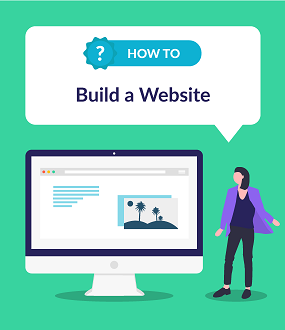How to Build Your Own Website: A Step-by-Step Guide to Creating Your Online Presence
Introduction

In today's digital age, having an online presence is essential for individuals and businesses alike. A website serves as your virtual storefront, connecting you with a global audience and showcasing your brand, portfolio, or ideas. Building a website may seem daunting, but with this step-by-step guide, you'll embark on an exciting journey to create your corner of the internet. Whether you're a complete beginner or a tech-savvy enthusiast, this comprehensive guide will demystify the process of website creation and empower you to take control of your online identity.
Defining Your Purpose and Goals
Before you dive into the technical aspects of website building, it's crucial to define the purpose and goals of your website. Determine whether it's an e-commerce site, a personal blog, a portfolio, or a business website. Clarify your target audience, the content you want to showcase, and the overall message you want to convey through your website. Having a clear vision will guide your decisions throughout the building process.
Choosing a Website Building Platform
There are several website building platforms available, each catering to different needs and skill levels. Explore popular options like WordPress, Wix, Squarespace, and Shopify, among others. Assess their features, user-friendliness, design templates, and pricing to find the best fit for your website goals. Remember that many platforms offer drag-and-drop functionality, making the process beginner-friendly.
Selecting a Domain Name and Hosting Provider
Your domain name is your website's address, and it plays a significant role in branding and accessibility. Choose a domain name that reflects your website's identity and is easy to remember. Check its availability and consider a relevant domain extension (.com, .org, .net, etc.). Additionally, select a reliable hosting provider that ensures your website's speed, security, and uptime.
Designing Your Website
Design is a crucial aspect of your website's appeal and usability. Select a visually pleasing and responsive template that aligns with your brand or style preferences. Customize the color scheme, fonts, and layout to create a cohesive and aesthetically pleasing design. Ensure that your website is mobile-friendly, as an increasing number of users access the internet on their smartphones and tablets.
Creating Compelling Content
Content is the heart of your website, so invest time in creating engaging and informative content. Write captivating text that resonates with your audience and complements your visuals. Incorporate high-quality images, videos, and graphics to enhance your website's visual appeal. Organize your content into clear sections and use headings, bullet points, and paragraphs for readability.
Adding Essential Pages
Certain pages are essential for most websites, such as the homepage, about page, contact page, and privacy policy. Your homepage serves as the first impression, so make it inviting and informative. The about page allows visitors to learn more about you or your brand. The contact page should include a contact form or email address for inquiries. And the privacy policy ensures transparency and compliance with data protection regulations.
Integrating Functionalities
Depending on your website's purpose, you may need to integrate various functionalities. If you're running an e-commerce site, incorporate a shopping cart and payment gateway. For a blog, enable commenting and social media sharing. Consider adding a search bar, social media icons, and email subscription forms to enhance user experience and engagement.
Optimizing for Search Engines
Search Engine Optimization (SEO) is essential for increasing your website's visibility on search engines like Google. Research relevant keywords and incorporate them into your content, headings, and meta descriptions. Ensure your website's loading speed is optimal and that it is mobile-friendly. Create a sitemap and submit it to search engines for better indexing.
Testing and Launching Your Website
Before launching your website, thoroughly test its functionality and compatibility on different devices and browsers. Check for broken links, typos, and overall user experience. Ask friends or colleagues to provide feedback. Once you're satisfied, launch your website and announce it to your network and social media channels. Celebrate this significant milestone!
Monitoring and Maintenance
Building a website is just the beginning; consistent monitoring and maintenance are crucial for its success. Keep an eye on website analytics to understand visitor behavior and preferences. Update your content regularly to keep it fresh and relevant. Ensure your website's security with regular backups and software updates. Respond to user inquiries and feedback promptly to build trust and rapport.
Conclusion
Congratulations! You've successfully built your own website and claimed your space on the internet. Whether it's a personal blog, a thriving e-commerce store, or a portfolio showcasing your talents, your website reflects your vision, creativity, and identity. As you continue to enhance and evolve your online presence, remember that a website is a dynamic tool for communication, growth, and self-expression. Embrace the journey of website ownership, and let your corner of the internet shine brightly!
